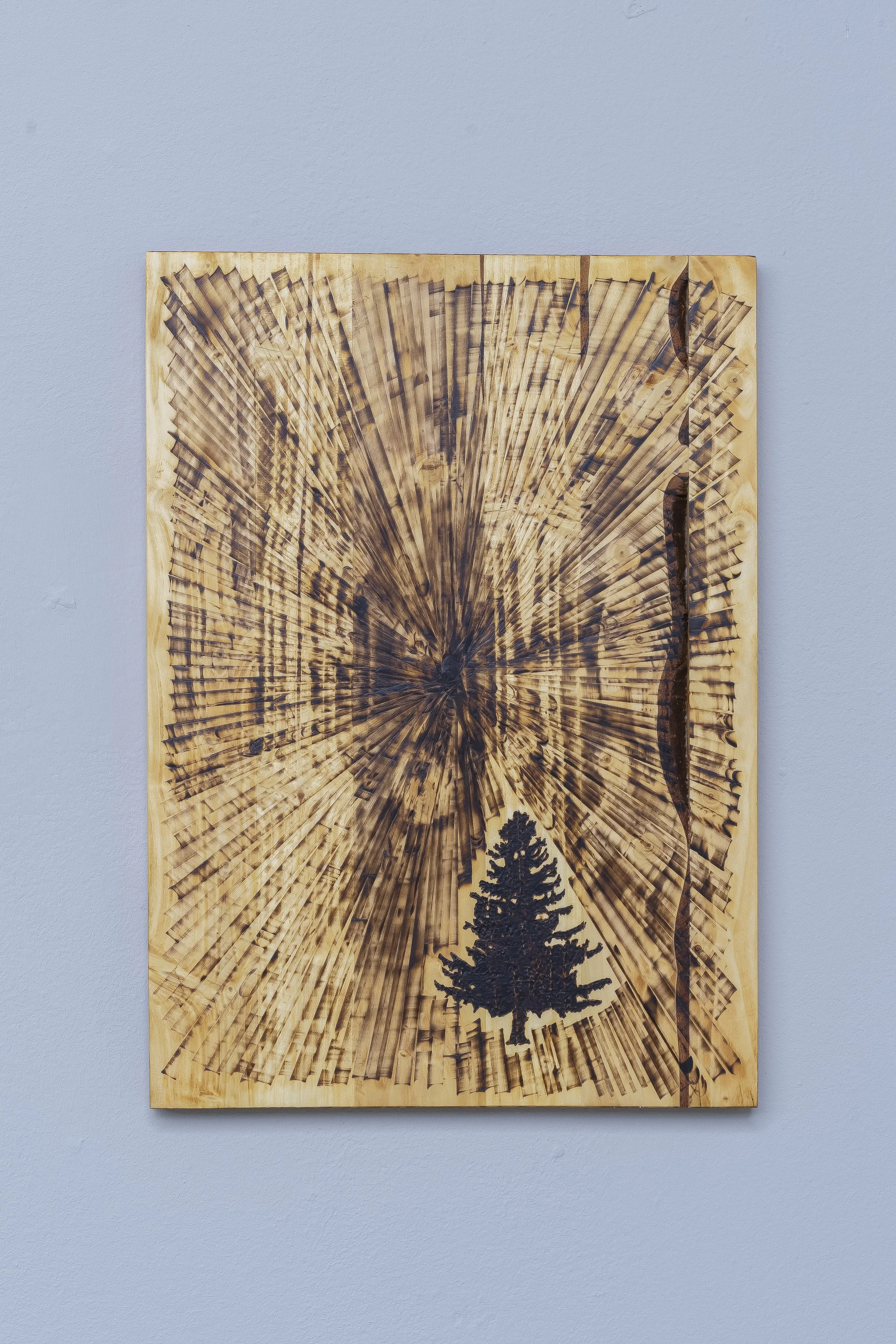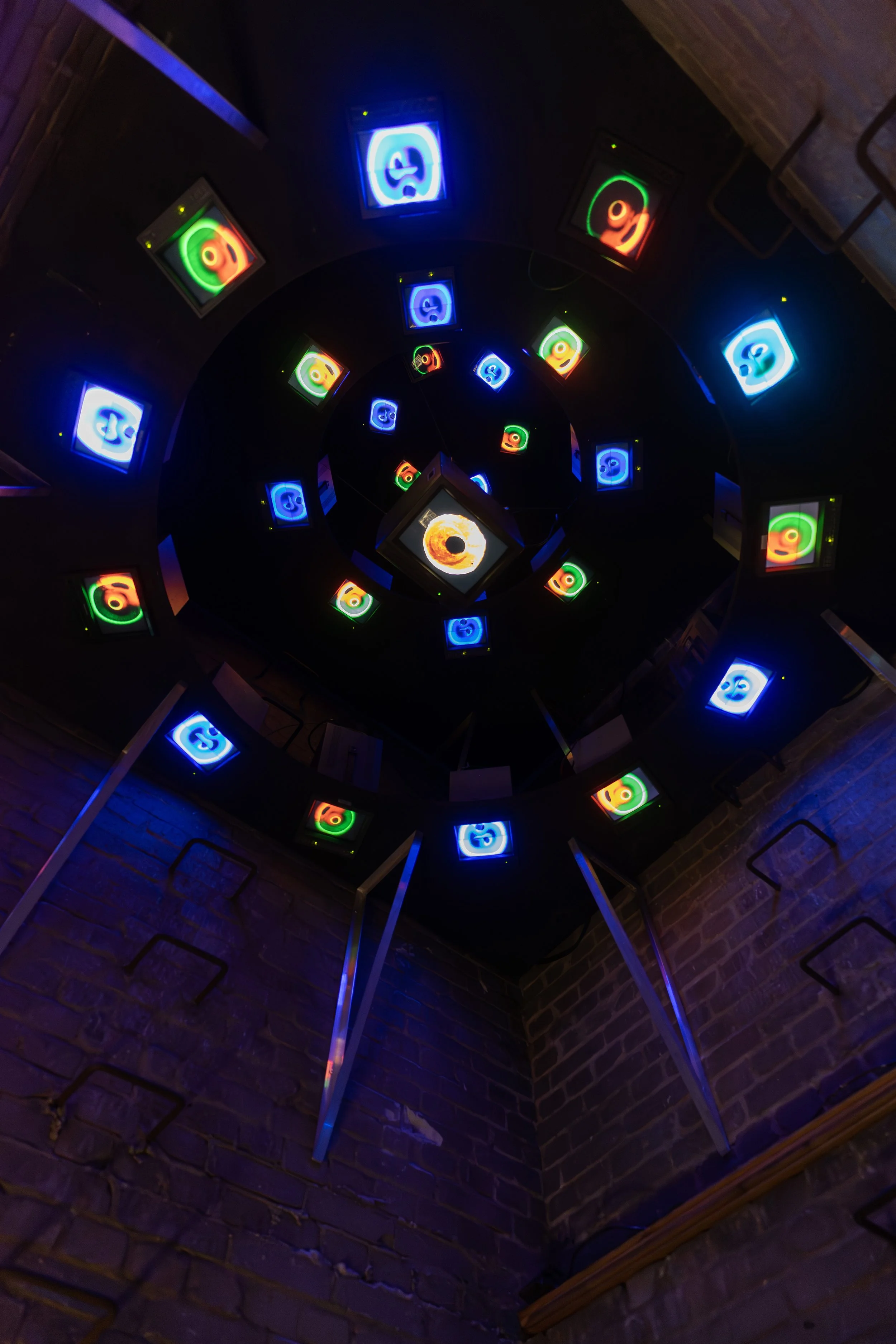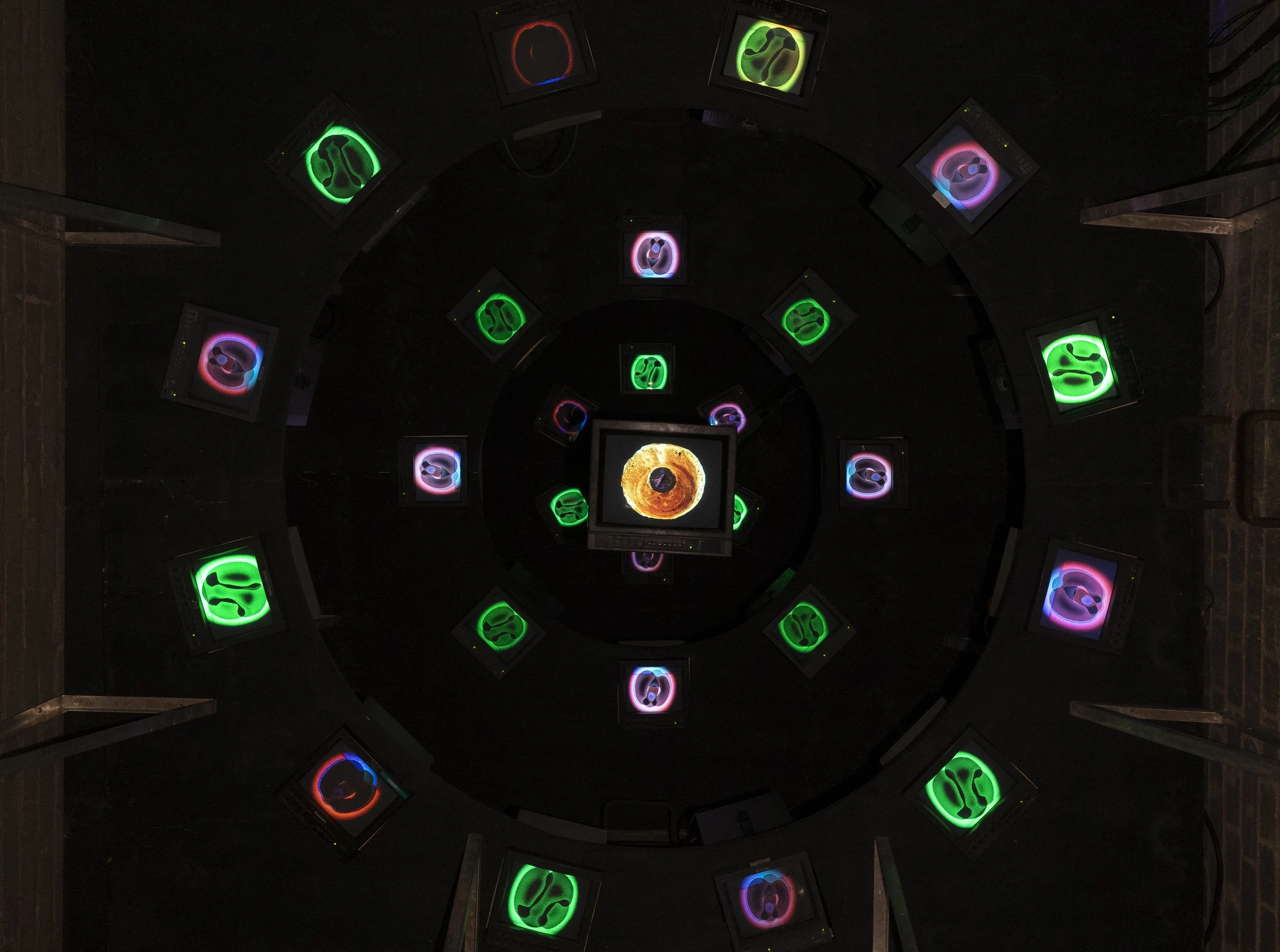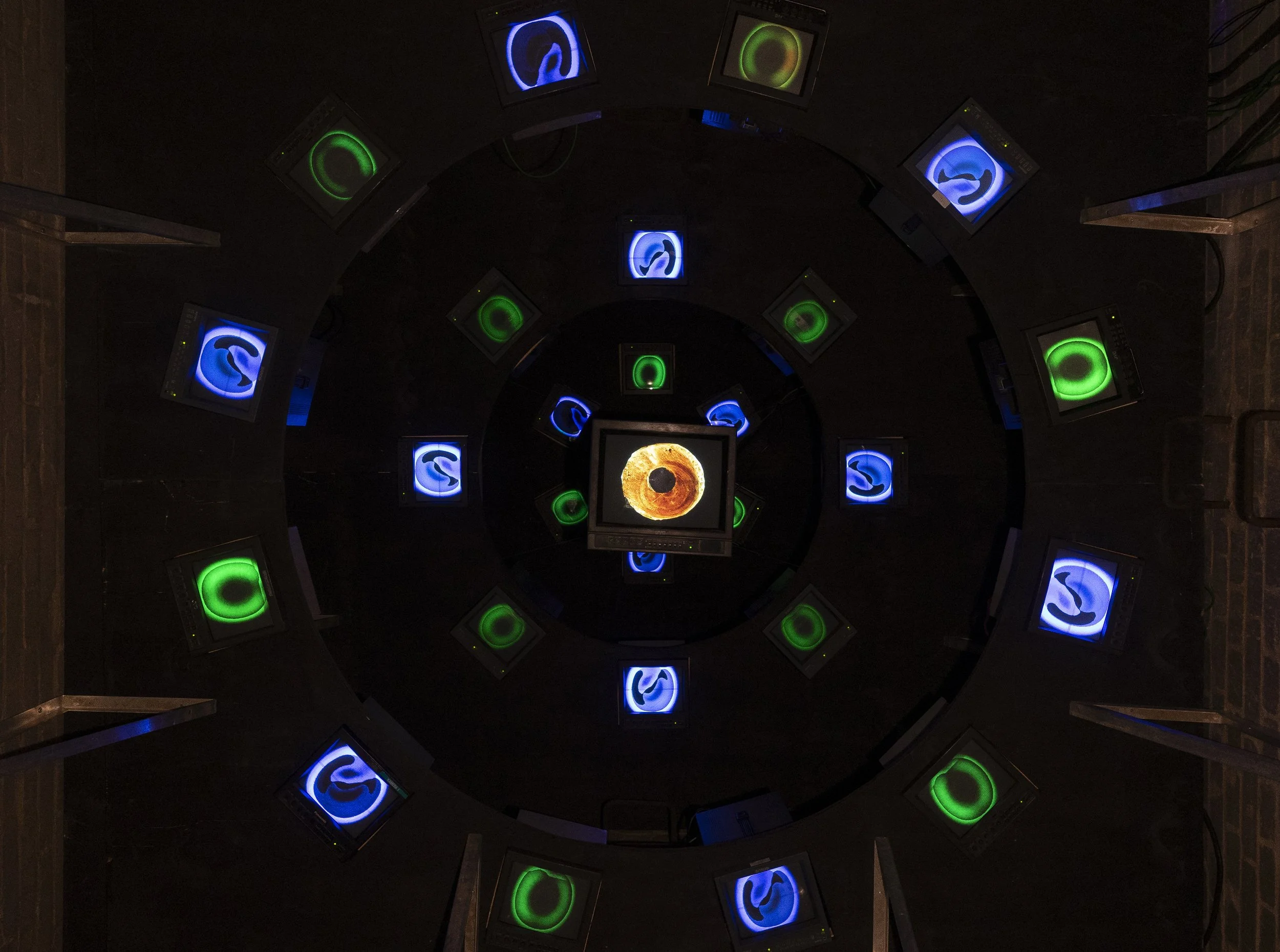Cornelius Woyke, Valentin Wedde, Georg Vierbuchen, LeonardHerfurth
Weihnachsbaum 3
Cornelius Woyke, Valentin Wedde, Georg Vierbuchen are showing new artworks made from Christmas Trees found on the streets of Berlin. Our tower room hosts an installation of CRT televisions by Leonard Herfurth
The project began in 2021 at Sternschuppen where the artists carved the Christmas Trees down into Baseball bats. It continued at FKA SIX in 2022, this time with the trees being cut down to create playable recorders!
“There is not one single invention of (Nature's), however subtle or impressive it may be thought to be, that the human spirit cannot create; no forest of Fontainebleau or moonlit scene that cannot be produced with a floodlit stage set; no waterfall that hydraulics cannot imitate so perfectly as to be indistinguishable from the original; no rock that papier-mâché cannot copy; no flower that specious taffetas and delicately painted papers cannot rival! There is no doubt whatever that this eternally self-replicating old fool has now exhausted the good-natured admiration of all true artists, and the moment has come to replace her, as far as that can be achieved, with artiface.”
-Joris-Karl Huysmans, Against Nature
The main character of Huysman's plotless novel retreats to a house on the outskirts of Paris, which he designs according to his idea of an ideal artificial world. He spends ages furnishing the rooms with extravagant imitations, all in order to immerse themselves completely in a synthetic world.
I guess the choice of your interior design is said to tell you a lot about their owners: The walls of the gallery are painted gray. The floor has been covered with wood chips. Several objects are scattered around, giving the impression that the gallery space has become the dwelling of a creature that is now more or less voluntarily eking out its existence here. Brown, earthy tones dominate the color palette of the interior. All items in the room are made from the wood of Christmas trees. The wood, oiled in a warm yellow color, gives the entire room a cottagecore feel. There is a pull-up bar above the entrance door. Next to it is a washbasin with a mirror and a small stool in front of it. In the corner of the exhibition space is also a normal sized chair. But both the chair and the stool have a striking peculiarity. Their legs are too long and seem to grow out of the seat. Pointed and tapering towards each other, they prevent a person from sitting on it. Next to it, two stilts with coked tips lean against the wall. These appear to have been used to create a charcoal inscription on the ceiling. The iconographic codes of the Sternsingers are adopted here. Only the letters are wrong and thus give an indication of a different authorship. Sternsingers are usually children pretending to be adult kings. The author comes to the conclusion that the living creature here might be stuck in an early adolescent phase. The pull-up bar and the stilts point to a character who is not accepting one's own physical constitution and wants to appear bigger than one is. Imposters are extremely common among artists. The combination of living space and bathroom, without any spatial separation evokes the association, that the ominous entity must live a precarious life. The wooden chips form a small mound in the middle of the room, on top of which a baseball bat and a flute (the two editions from previous years Weihnachtsbaum exhibitions) are stuck together in a Frankenstein-like construction, resembling a grave cross. Rumour has it that this will be the last Weihnachtsbaum exhibition. However, the monument leaves it open as to whether the ominous entity or just the past two editions are being laid to rest here. A graveyard in your own living room... How cozy. The factory-like building in which the gallery space is located has a large chimney. This shaft is no longer in operation and can now be accessed via a rickety ladder. A permanent collaborator has taken up residence there: Kaltwasser TV. Tube televisions are mounted on three circular levels. The screen faces the viewer. The flickering image shows a rotating pine tree, while Christmas carols can be heard in the background.
A Christmas tree is an extremely artificial type of decoration. After all, a dead piece of wood is draped in the center of the living room and for a few days everyone pretends that it is still a living plant. Only when it begins to decay does the perception change and the lifeless fir is disposed of on the street. By using this wood as the sole source of all interior design objects, the exhibition “Weihnachtsbaum 3” not only talks about the blurred line between culture and nature, but also reveals something about the living of contemporary artists: Here the proud presentation of one's own precariousness is shown as a gesture of the masochistic joy of exhibiting one's own suffering. Under the charming quaintness of the yellowish oiled wood lies an ironic self-pity presentation of the miserable lifestyle of young artists. Through the representation of a lived dissolution of boundaries between one's own artistic practice and private life, the exhibition creates an ominous subject that is both authentic and highly artificial. And so the cruel life of the Christmas trees becomes an ideal metaphor to illustrate the paradox of a "bohemian" lifestyle as an artificial aestheticization for a suffering existence.
Text by Lorenz Liebig

















